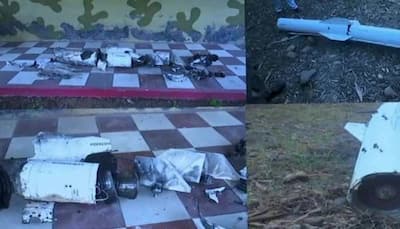New Delhi: Operation Sindoor not only marked a decisive military and strategic victory for India but also exposed vulnerabilities within Pakistan’s armed forces, particularly linked to their heavy reliance on Chinese-supplied military hardware. This conflict, according to reports, served as a real-world test for Chinese defense technology against a combination of Indian and Western platforms that revealed a pattern of system failures and underperformance.
With nearly 82% of Pakistan’s defense imports originating from China, the operation put these systems to the test under intense combat conditions. Indian forces successfully targeted key Pakistani military and terror infrastructure, overcoming or bypassing Chinese-origin air defense systems such as the HQ-9 – which failed to intercept Indian missile strikes, including those delivered BrahMos missiles system.
Ranging from PL-15 air-to-air missiles to J-10C fighter jets and naval frigates, other Chinese-supplied systems were also reported to have malfunctioned or underperformed during the conflict. It left Pakistani defenses compromised and unable to effectively respond to India’s offensive.
The operational setbacks experienced by these Chinese weapons have had broader repercussions beyond the immediate battlefield. The inability of these systems to deliver under combat conditions has impacted China’s reputation as a global arms exporter and reinforced longstanding concerns about the quality and reliability of Chinese military equipment.
Analysts said these failures validate earlier skepticism regarding Chinese defense technology and may accelerate the decline in China’s arms exports, which had already been shrinking due to quality issues. The credibility gap exposed by ‘Operation Sindoor’ also provides a strategic opening for other arms manufacturers, including India, to emphasise their own combat-proven reliability.
Air Defense Systems (HQ-9, HQ-16/LY-80): The reports indicate the complete failure of Pakistan’s Chinese-made air defense systems to intercept Indian aircraft or missiles effectively. Indian forces successfully bypassed and jammed Pakistani air defense units, including those protecting important military installations. Questions have been raised about these systems’ detection and response capabilities – particularly against advanced Indian and Western technology.
Some Chinese nationals too reportedly criticised the Pakistani operators on social media, attributing failures to inadequate training and operational inefficiencies.
Air-to-Air Missiles (PL-15): Marketed as a rival to Western systems like the American AIM-120D, the Chinese PL-15 beyond-visual-range air-to-air missile reportedly failed to hit targets or malfunctioned mid-flight. Indian military officials displayed recovered fragments of a PL-15 missile in Hoshiarpur that had missed its target, casting doubt on its combat effectiveness.
While some pro-Chinese media sources attempted to claim PL-15 successes, these claims lacked independent verification and were largely dismissed as propaganda.
CM-400AKG Air-to-Surface Missile: The CM-400AKG air-to-surface missile, touted as a “carrier killer”, was detected early by Indian surveillance systems such as Netra and AWACS. Despite its speed, it lacks stealth features and terminal maneuverability – making it vulnerable to spoofing and jamming.
Fighter Jets (J-10C, JF-17): Pakistan deployed Chinese-made J-10C and JF-17 Block III fighter jets equipped with PL-15 missiles during the operation. However, these jets reportedly failed to significantly impede or deter Indian airstrikes.
Claims by Pakistani and Chinese sources, cited in media reports, that J-10C aircraft downed multiple Indian jets, including Rafales, remain unverified with no debris or evidence presented. Analysts generally regarded the Chinese jets’ performance against Indian aircraft – a mix of Russian and Western platforms – as ineffective.
Radar Systems: An Indian Air Force strike reportedly destroyed a Chinese-supplied YLC-8E anti-stealth radar at the Chunian Air Base in Punjab – exposing further vulnerabilities in China’s air defense offerings to Pakistan.
AR-1 Guided Missile (Deployed via Wing Loong-II Drones): The AR-1 is a Chinese laser-guided air-to-surface missile typically deployed from unmanned aerial vehicles like the Wing Loong-II drone.
Pakistan utilised these drones during the conflict, but Indian air defenses successfully intercepted or neutralised AR-1 missiles before they could hit targets. The missile’s failure highlights deficiencies against well-established Indian defense networks.
Chinese-Origin Drones: Pakistan employed various Chinese-origin drones for reconnaissance and offensive roles during the conflict. Indian forces intercepted and neutralised several drones, with wreckage displayed at official briefings.
These interceptions raise questions about the drones’ stealth capabilities and operational effectiveness in contested airspace.
The conflict exposed fundamental vulnerabilities in the reliability and combat effectiveness of Chinese military technology despite Beijing’s aggressive marketing as a credible alternative to Western and Russian arms suppliers. Reports indicate frequent defects in critical components, poor quality control and inadequate after-sales support.
Past instances of malfunctioning Chinese military equipment sold to other countries – including faulty frigates for the Pakistan Navy and issues with fighter jets in Nigeria and Myanmar – point to a recurring pattern of quality problems.
Across social media, netizens from China and other regions displayed mixed reactions. Some blamed Pakistani operational shortcomings rather than the hardware itself, while others expressed frustration over the exposed failures.
The debate highlighted how the weapons’ poor performance has become a sensitive topic, with some attempts to spin or downplay the deficiencies.
Meanwhile, Indian observers and analysts have pointed to the conflict as a proof point for India’s growing defense manufacturing capabilities and the reliability of its own systems.
Stay informed on all the , real-time updates, and follow all the important headlines in and on Zee News.








